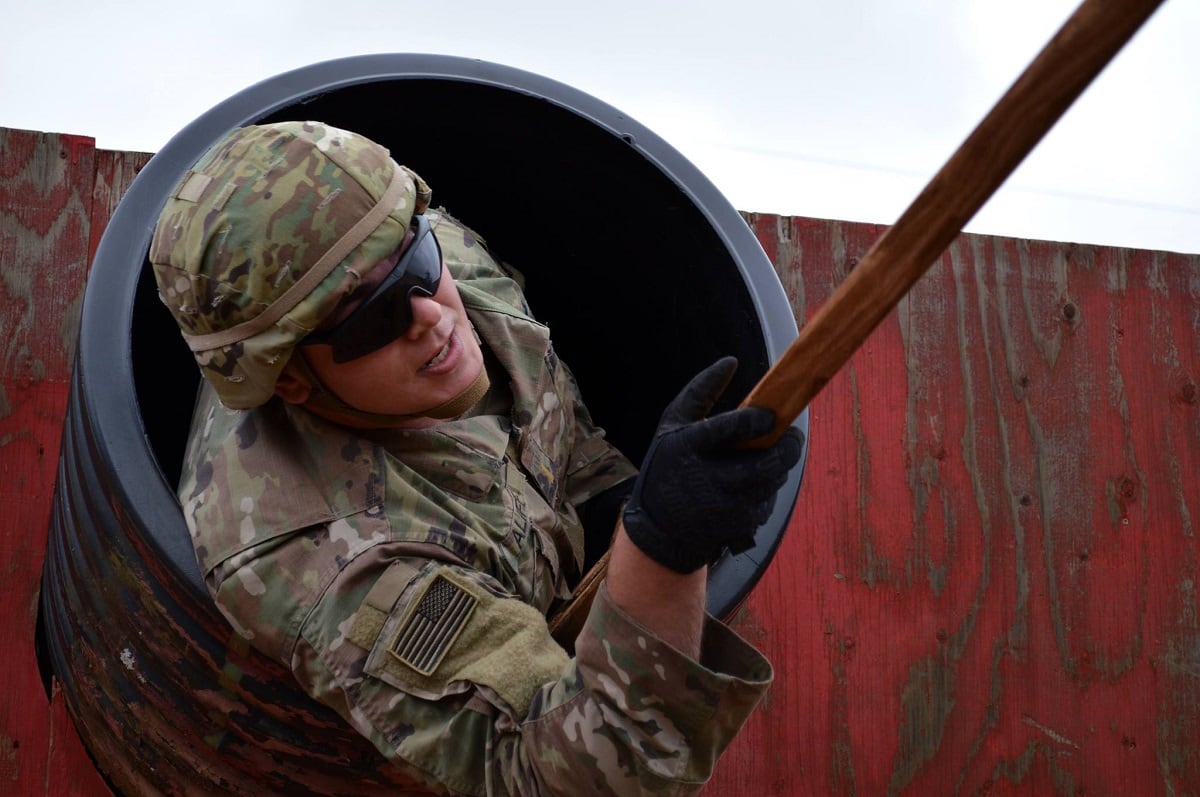FORT EUSTIS, Va. ― Army Training and Doctrine Command is taking on a top-to-bottom review of everything it does.
So far, that has yielded a new fitness test and an extension to infantry basic training. In the next year, leaders are tasked with overhauling the way the Army recruits and builds new soldiers.
In the midst of that, a new command team came in over the summer to fill that tall order.
“When we’re all in lower positions, you know, we all look up and see the guys up in those seats and we’re like … if I were there, what would I do?” Command Sgt. Maj. Timothy Guden, who took over as senior enlisted adviser in July, told Army Times in an Oct. 23 interview.
While Guden’s No. 1 job is to support Gen. Stephen Townsend, the new commander, in his efforts to review and reform TRADOC, the 31-year veteran has had his mind on fostering a more subtle shift for the enlisted soldiers Army-wide.
“When we have us, anybody that’s wearing the E-9 rank, that are asking the questions on, ‘Hey, what’s my position? What’s my role? What’s my responsibility? What are my duties?’ ― we probably have some things that we can improve on if we’re asking those questions,” he said.
Senior enlisted leaders are expected to identify issues within a unit and figure out how to solve them, he said.
The new Army Combat Fitness Test is an example. Feedback from some units is that they have challenges getting together the right equipment to start training their soldiers for the new test.
“You know, this isn’t a hard problem. We’ve been installing pull-up bars forever,” Guden said. "Use your unit credit card, go down to Lowe’s, buy a couple bags of Quikrete ― and a post hole digger, if you don’t have one — a couple of six-by-sixes, give it to an NCO and say, ‘Here’s your task.’ "
That is his message to every senior enlisted leader in his organization and beyond.
“Those are the types of things that I want to be able to message to NCOs, hopefully prior to them going to the sergeants major academy,” Guden said. “Those are the things that they need to be looking at, at their level. How is it that they can make the unit flow better?”

‘The big, green Army machine’
Last year, when the Army rolled out its Distributed Leader Course, the replacement for the much maligned Structured Self-Development, TRADOC also created a list of six leader core competencies as a reference touchstone through an NCO’s development.
They include readiness, leadership, training management, Army and joint operations, program management, and communications, and those concepts are threaded through the DLC. The idea is that NCOs will keep them in mind, or refer back to them, as their careers develop, and they will be evaluated on them as they move through the promotion system.
But building outstanding enlisted leaders will take more than a few tweaks to education. A recent Rand Corp. study found a relationship between time in service and effectiveness as an E-9 ― that is to say, that sergeants major with less than 22 years in service had soldiers with slightly higher attrition rates than those with more experience.
Guden read the study, he said, and immediately identified the kind of fast-burner who might run into trouble because of quick promotions during the Global War on Terror, when the Army needed to crank out squad and team leaders for troops in battle.
“We’ve developed a really bad habit of doing this — for the right reasons, mind you,” he said. “The big, green Army machine needed more, and we just kept feeding it and feeding it. And I guess now we’re having to deal with some of those things.”
One possible issue, the study identified, is that Army doctrine does not emphasize cultivating specific leadership traits until a soldier is eyeing a platoon sergeant job. Before that, mastery of soldier tasks and physical fitness count for the preponderance of promotion consideration.
RELATED

A lot of that has to do with the churn of deployments and permanent changes of station, Guden offered. Many platoon sergeants only spend 18 months in their positions ― but it can take about a year to get your bearing in a new unit while balancing operational demands, and by then, you have just months to make a lasting impact.
“If your first year is on a deployment, and then you get back to Fort Wherever … once you start applying yourself, it’s six months and, bam, you’re out of there,” Guden said. “Are we giving NCOs enough time to really grow and bloom?”
The Rand study suggested finding a way to identify and single out young, potential leaders who show a knack for empathy, organization and other traits they’ll be able to capitalize on further down the road.
“I think about that a lot. I don’t know what the answer to that is,” Guden said. “But I can tell you the one thing that I do know is that if a sergeant, who’s in his first leadership position — in my mind, that’s an NCO’s time to learn and grow and make their mistakes, maybe even bad mistakes."
But it’s important they have someone over them, he added to “slap them back into position, not literally ― if they don’t have somebody developing them and mentoring them, emulating for them what it looks like to do those things the right way,” they’ll continue to view their enlisted leaders as short-timers whose authority they can wait out until the next guy comes along.
Meghann Myers is the Pentagon bureau chief at Military Times. She covers operations, policy, personnel, leadership and other issues affecting service members.




